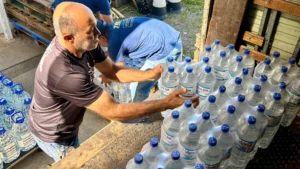Discover why this process is fundamental in the circular economy
What to do with a product when its useful life is over? Or how to exchange a product we bought online and didn't like? The answer to these two questions has to do with reverse logistics.
Reverse logistics is the process of managing the return of an item from the hands of consumers back to whoever sold, produced or supplied the raw materials. In other words, it is the opposite of the traditional logistics chain, which progresses from the supplier to the final consumer of a product.
It is reverse logistics that makes both product exchange and recycling possible. The reverse logistics chain follows this direction: the end consumer sends an item back to a company to be processed and sent either for recycling (or to be remanufactured) or back to the store.
With the increase in online shopping due to the Covid-19 pandemic, having a fine-tuned reverse logistics process has gained even more importance. If before 2020 the product return rate from retailers was around 10%, when purchases migrate completely online this number could reach 30%, according to a Deloitte consultancy report.
The process begins when the consumer notifies that they want to return a product. The item is then shipped to the processing center, where its destination is decided. If it's an exchange, it goes back to the store; if its useful life is over, the company can assess whether it can be repaired or whether the parts can be sold; thus, waste generation is reduced. What is left is ultimately sent for recycling.
Therefore, reverse logistics is essential to reduce environmental impact product disposal. After all, following the logic of circular economy, it allows companies to recycle, repair and reuse an item as much as possible before throwing it in the trash. Or give what was discarded the correct final destination (as happens with batteries, for example, which cannot be thrown in the general trash).
In Brazil, the National Solid Waste Policy – PNRS, requires companies to have a defined waste reverse logistics process, to encourage its reuse and correct disposal of waste that is harmful to the environment. An example: companies that manufacture or sell batteries, tires, pesticides, lubricating oils, fluorescent lamps and electronics are responsible for receiving them back and disposing of them correctly.
In addition to reducing the environmental impact, having fine-tuned reverse logistics brings two important gains for a company. The first is that, by speeding up the exchange of a product purchased online, consumer trust is gained. The second is that the brand demonstrates that it is responsible with the disposal of products and packaging, making the most of the pieces and generating less waste.
Read more:
What is circular economy and how does it protect the environment
What is greenwashing and how to recognize false advertising
How a delivery business can stop global warming


